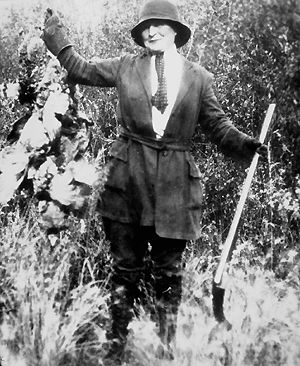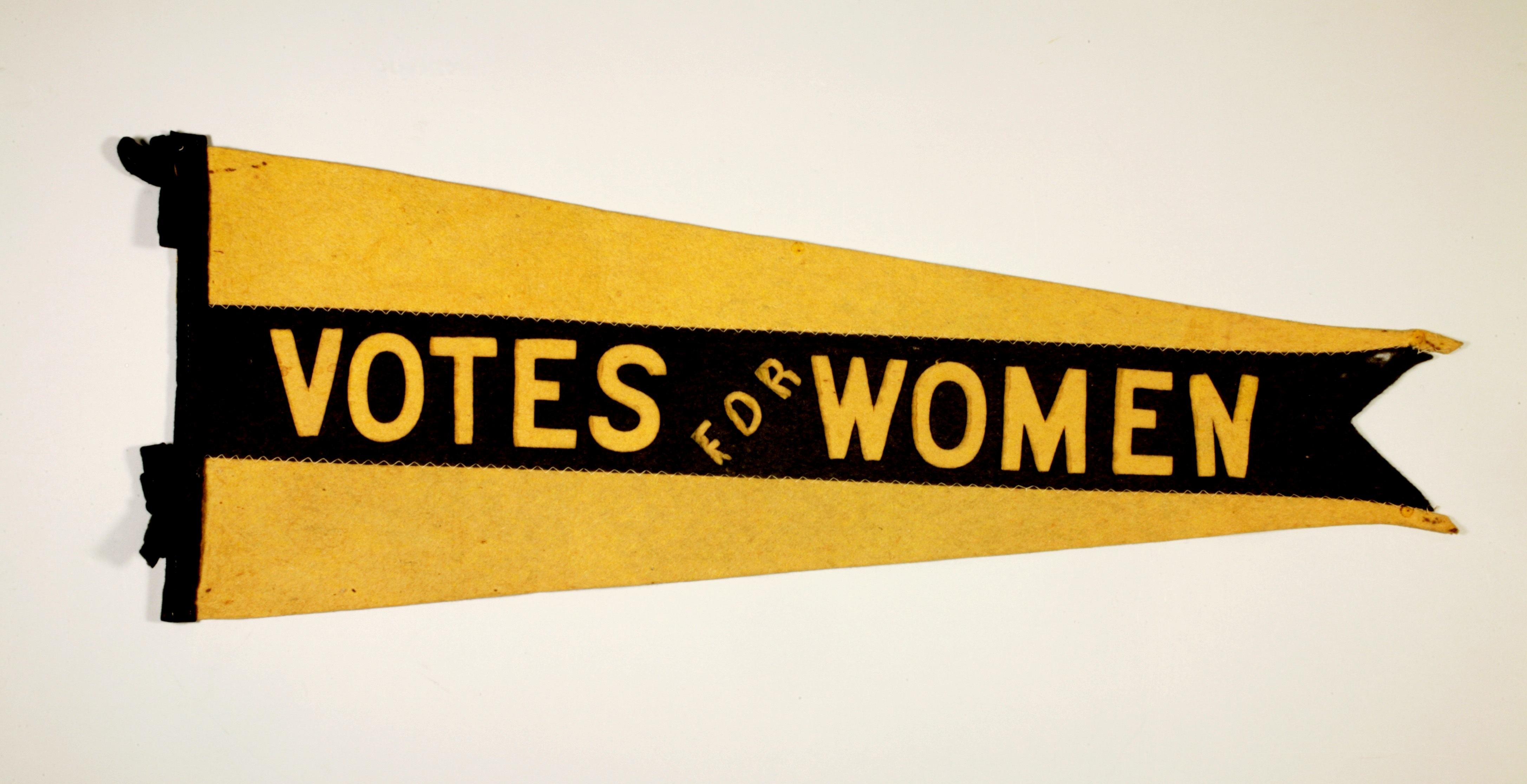As prospectors, mountaineers, farmers and homesteaders, women played an important role in the development of Western Canada. This list of ten female trailblazers includes Black American settlers and prospectors; a Tagish prospector whose discovery helped spark the Klondike Gold Rush; a glacier specialist and founding member of the Alpine Club of Canada; and one of the first women hired by the North-West Mounted Police. Some travelled from overseas or the United States, others from Central or Atlantic Canada — all were lured to the Canadian west by the prospect of land, freedom and opportunity.

Catherine Schubert
Catherine Schubert (born 23 April 1835 in Rathfriland, County Down, Ireland; died 18 July 1918 in Armstrong, British Columbia). Catherine Schubert was the only female member of the 1862 Overlanders, a group of some 150 settlers who travelled from Fort Garry (now Winnipeg, Manitoba) to the interior of British Columbia, following the Cariboo Gold Rush. She travelled with her husband and three children and gave birth to her fourth child on the journey. Schubert briefly worked for the Hudson’s Bay Company in Fort Kamloops, then ran an inn and restaurant in Lillooet while her husband spent the summers prospecting for gold in Quesnel. The family eventually settled on a farm in the Okanagan Valley.

Sylvia Stark
Sylvia Estes Stark, pioneer (born 1839 in Clay County, Missouri, US; died 7 November 1944 in Fruitvale, Salt Spring Island, British Columbia). Sylvia Stark was born into enslavement in Missouri; her father purchased the family’s freedom with funds earned from gold prospecting in California. After California passed a series of discriminatory laws in the 1850s, Governor James Douglas invited Black Americans to settle on Vancouver Island. Prospective immigrants were promised British citizenship and the opportunity to purchase land. Stark and her family were among the 600 Black Americans who emigrated to British Columbia from California in 1858–59. They were also among the original settlers on Salt Spring Island — of the 20 families who settled there in 1860, nine were Black American.

Shaaw Tláa (a.k.a Kate Carmack)
Shaaw Tláa (a.k.a Kate Carmack), prospector (born c. 1857-–67 near present-day Bennett Lake, YT; died 29 March 1920 in Carcross, YT). A Tagish woman, Shaaw Tláa (pronounced Shaw Claw) was of the dakl’aweidí (killer whale) clan. Soon after losing her first husband and infant daughter in an influenza epidemic, she married George Carmack, a white American who had moved to Alaska to take up prospecting. The couple were part of the group that discovered gold near the Klondike River in 1896, sparking the Klondike Gold Rush. They made $1 million from their gold claim; however, George later abandoned her, and she was unsuccessful in suing for her half of the fortune. Shaaw Tláa was inducted into the Canadian Mining Hall of Fame in 2019, 20 years after the other Klondike discoverers were inducted.

Mary Vaux Walcott
Mary Morris Vaux Walcott, botanical artist, photographer, glaciologist, mountaineer (born 31 July 1860 in Philadelphia, Pennsylvania; died 22 August 1940 in Saint Andrews, NB). Vaux Walcott was born into a wealthy and prominent Quaker family in Philadelphia. For over 40 years, she spent nearly every summer in the Canadian Rockies, where she and her brothers conducted some of the first studies of glaciers in Canada, documenting the changing glaciers in drawings, maps, surveys and photographs. After about 1910, Vaux Walcott continued the glacial studies on her own. She was also a founding member of the Alpine Club of Canada and the first woman in Canada to summit a peak over 3,000 m. An avid and accomplished botanical artist, Vaux Walcott’s crowning achievement was the publication of 400 of her watercolours in the five-volume North American Wild Flowers.

Mary Schäffer Warren
Mary Schäffer Warren (née Mary Townsend Sharpless), naturalist, writer, photographer, surveyor (born 4 October 1861 in West Chester, Pennsylvania; died 23 January 1939 in Banff, AB). Schäffer Warren was also born into a Quaker family in Pennsylvania. She and her first husband, Dr. Charles Schäffer, visited the Canadian Rockies every summer beginning in 1891. During these trips, Charles, an amateur botanist, conducted botanical research; Schäffer Warren assisted by pressing, sketching, painting and photographing wildflowers. She continued these trips to the Rockies after her husband’s death in 1903, and later married one of her guides, English veteran William Warren. In 1908, Schäffer Warren became the first non-Indigenous person to explore Maligne Lake; in 1911, the Geological Survey of Canada asked her to survey the lake, although she had no experience as a surveyor. She was also one of the first non-Indigenous women to travel through much of what is now Banff and Jasper national parks.

Martha Black
Martha Louise Black, naturalist, politician (born 24 February 1866 in Chicago, Illinois, USA; died 1 November 1957 in Whitehorse, Yukon). Martha Black joined the Klondike Gold Rush in 1898, hiking over the Chilkoot Pass with her younger brother George Munger Jr. and cousin Harry Peachy in an expedition financed by her father. She gave birth to her third child in Dawson City, where she and her family later established a sawmill and gold crushing plant. In 1904, she married her second husband, George Black, a lawyer from New Brunswick. Martha Black eventually became a Fellow of the Royal Geographical Society for her research and lectures on Yukon flora. In 1935, she became the second woman elected to the Canadian House of Commons; she represented the Yukon in Parliament until 1940.

Katherine Ryan (a.k.a. Klondike Kate)
Katherine “Kate” Ryan (aka Klondike Kate), NWMP special constable, restaurateur, nurse (born 20 August 1869 in Johnville, NB; died 20 February 1932 in Vancouver, BC). Katherine Ryan earned the nickname ‘Klondike Kate’ for her escapades in Yukon beginning during the Klondike Gold Rush. On her journey to the Klondike and while settled in Whitehorse, Ryan made a name for herself by establishing several restaurants. She was one of the first women hired by the North-West Mounted Police. Ryan was first hired by the force’s Whitehorse division in 1900 to assist with female prisoners. Later, she was appointed as an inspector to search for smuggled gold.

Georgina Binnie-Clark
Georgina Binnie-Clark, farmer, women’s rights advocate, author (born 25 April 1871 in Sherborne, England; died 22 April 1947 in London, England). In 1905, Binnie-Clark and her sister traveled to Canada to visit their brother Louis, who owned a homestead farm near Fort Qu’Appelle, Saskatchewan. During this visit, she became interested in homesteading. As a single woman, however, she did not qualify for a free homestead from the Canadian government. Instead, she purchased a farm from vacating homesteaders. Binnie-Clark led the movement to promote women homesteaders in Canada. In 1908, she visited government officials in Ottawa and began lobbying to make single women eligible under the Canadian homestead legislation (a change that didn’t happen until 1930).

Lucille Hunter
Lucille Hunter (sometimes spelled Lucile), prospector (born 13 January c. 1874–1882 in the United States; died 10 June 1972 in Whitehorse, YT). Lucille and her husband Charles were among the first Black people to settle in the Yukon. They arrived in 1897 as part of the Klondike Gold Rush, which attracted thousands of people from around the world — a small portion of whom were Black. The Hunters were among the 99 Black people in the Yukon counted in the 1901 census. The couple staked claims to mine for gold in Dawson City and silver in Mayo. After Charles’ death in 1939, Hunter continued their prospecting work. Each year she travelled from Dawson to Mayo on foot to check on their claims, a distance of approximately 230 km. Lucille Hunter remained in the Yukon for the rest of her life, later moving to Whitehorse.

Kathleen Rice
Kathleen Creighton Starr Rice, homesteader, prospector (born 4 June or 22 December 1882 in St. Marys, ON; died 6 January 1963 in Minnedosa, MB). Kathleen Rice was born into an affluent family in Ontario and received the Edward Blake Scholarship in classics and mathematics at the University of Toronto, where she graduated with a Bachelor of Arts in 1906. She moved to the prairies in 1911 to teach, and spent summer vacations climbing in the Rocky Mountains, which earned her membership with the Alpine Club of Canada. In 1913, Kathleen Rice left teaching to embrace a life of homesteading in northern Manitoba. (Her homestead was registered under her brother’s name.) While homesteading, Rice taught herself geology and earth sciences and reached out to local Cree to learn bush survival skills. In the winters, she trapped and traveled by dog sled. In the summers, she took to her canoe for prospecting. She staked several claims in northern Manitoba, the most significant being her discovery of copper pyrite in 1928. In 2014, Rice was inducted into the Canadian Mining Hall of Fame.

 Share on Facebook
Share on Facebook Share on X
Share on X Share by Email
Share by Email Share on Google Classroom
Share on Google Classroom


















